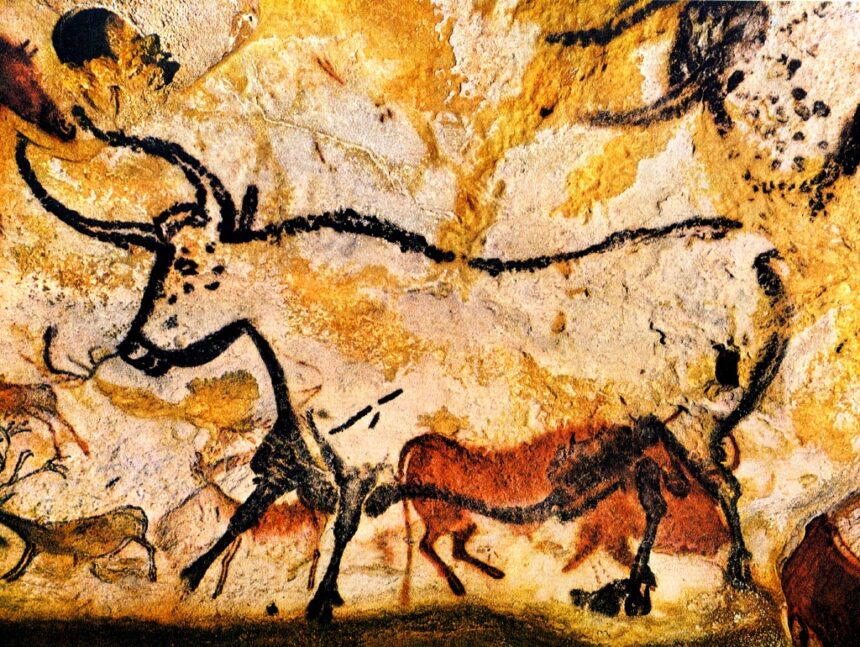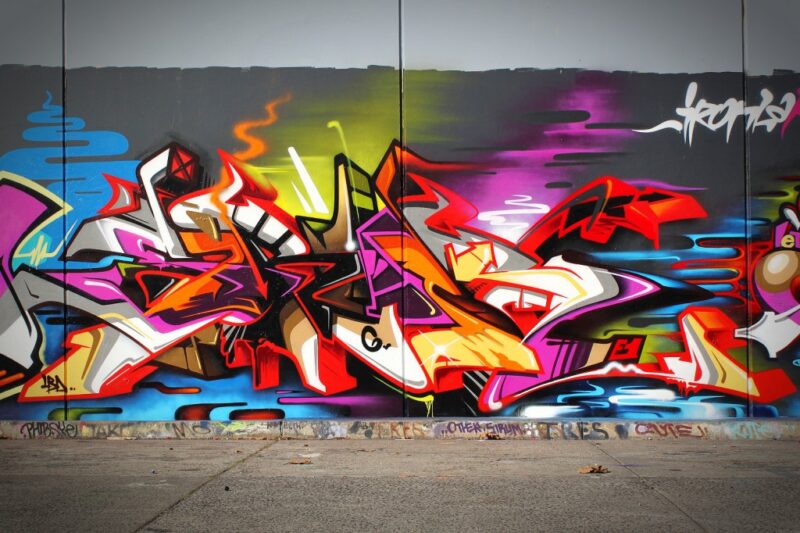There are obvious similarities between ancient cave art and modern-day graffiti, but where did this symbolic behaviour come from? Why do humans have this innate need to express their feelings through abstract shapes and symbols, and when did it all begin?

From pigments to printing presses, symbols changed the way humans lived and provided a new skill set to help them survive in an unpredictable world. Humans were using colour by 175,000 years ago, to mark objects and possibly their own skin. Humans have a natural need to communicate using symbols. This can be achieved unintentionally, such as the connotations of certain types of clothing, for example a suit. It could also be something more explicit, like writing or drawing on a physical object, whether it is an impressive ancient fresco on the wall of a cave or a colourful outburst of graffiti in an urban setting. We see a plethora of symbols every day, and interpret them without even noticing. Symbolic communication is a crucial aspect of human evolution, and has deep historical and archaeological roots.
Our brains have developed to communicate this way. Complex symbolic behaviour allowed for the technological innovations of the Late Pleistocene to be kept alive in society, so that new ideas were not forgotten. This led to more complex stone tool industries, and many other new behaviours such as the production of shell beads and the use of pigment: the beginnings of personal adornment and art. So how do symbolic behaviours present themselves in the archaeological record? And what do these symbols reflect about our genetic and cultural heritage?
There was a point, some 400,000 years ago, when humans became anatomically modern: they looked like us. The date of this anatomical innovation, which included the ability to walk upright on two legs, is undisputed, because it is visible in fossil records. There is, however, much debate around the advent of behavioural modernity, when these early humans started to display “modern” behaviours, such as having larger population groups and finding new ways to communicate. This is more difficult to place, as the complex neurological change that allowed for symbolic thinking cannot be seen in human skeletons, it is only visible through the cave paintings, shell beads and improved stone tool technologies, which arguably occur later than the cognitive change, if such behaviour evolves over time.

Human cultures use many forms of expression, which have developed over time, including the most basic “episodic” awareness; this is the perception of our immediate environment and events as they happen. This is similar to behaviours seen in other animals, such as warning of immediate danger and obtaining food when it is needed. Humans are unique because as well as episodic behaviours, we also have the ability for abstract thought: we can communicate about the past and about future plans. Just as humans have progressed from basic to more complex abstract thoughts, communication too has progressed from behavioural forms to symbolic systems, extending knowledge beyond the capacity of human memory.
Human experience is too vast to be captured by a single symbolic system; there are many mediums of symbolic communication in human society. Cave art represents one type of symbolic communication: using conceptual thought to construct representations of animals, people and other images such as handprints or dots. Cave art is essentially the externalisation of abstract thought; turning an untouchable idea into something physical and permanent. It’s the same concept as writing down something you don’t want to forget; recording ideas externally and so extending your thought and memory outside of your body.
There are many parallels between ancient cave art and modern day graffiti: like cave paintings, graffiti is a form of symbolic expression, using abstract ideas and shapes to communicate a message to other humans. This message may be different to that portrayed in early cave art, but it is the same mechanism and process.
If the cave paintings of the past reveal so much about our species development and evolution, then surely the modern works of today will be valued and studied in the future. If we hold ancient art in such high esteem, then we need to preserve modern society’s history through art. Sure, it’s conflicting, it’s controversial, and it doesn’t even really seem to last on its own, but street art, like the cave art of old, is one part of today’s culture that we can preserve for the sake of tomorrow. Graffiti makes comments about the social and political state of our world. The voices of everyday people are so small in history and archaeology; expressions such as cave art and graffiti are really special as they reflect the lives of the average person in society rather than elites.
We need to protect both our cultural and modern heritage, even If the only thing it communicates to future generations is that, like our cave art producing ancestors before us, we physically record our abstract thoughts and incorporate symbols and colour into permanent surfaces of our everyday lives.